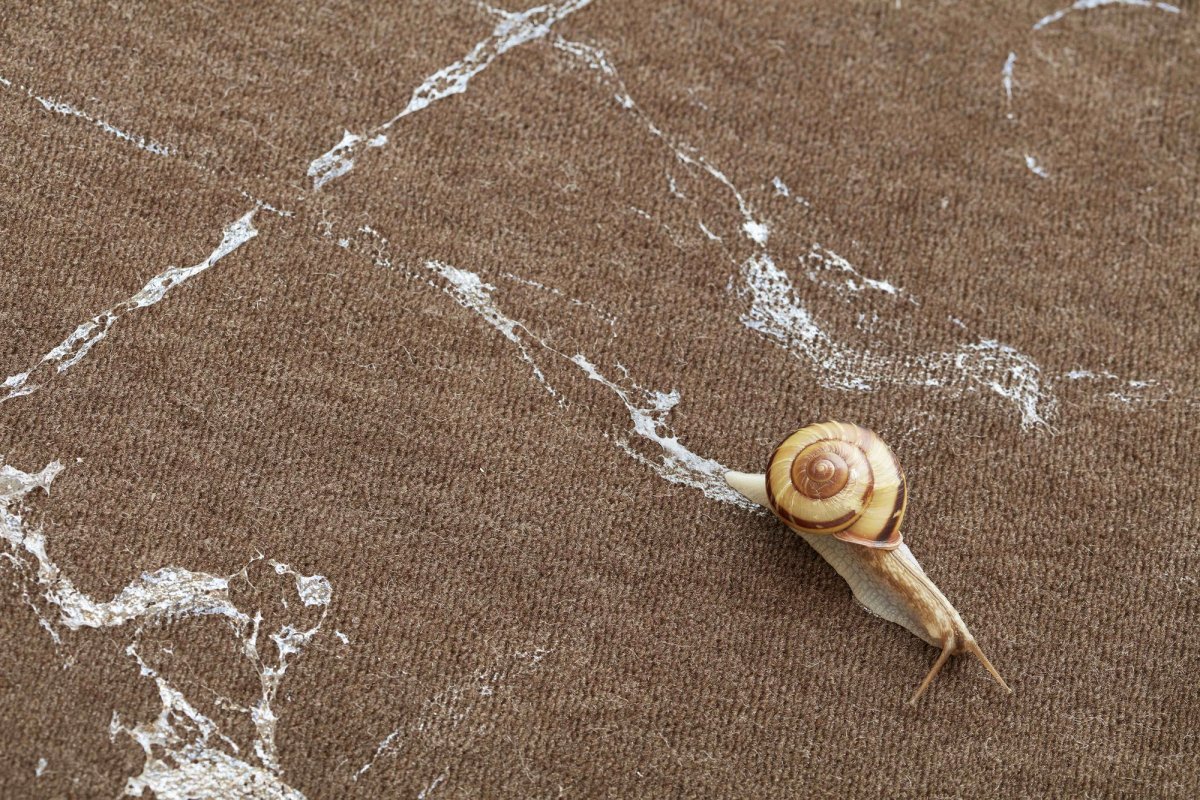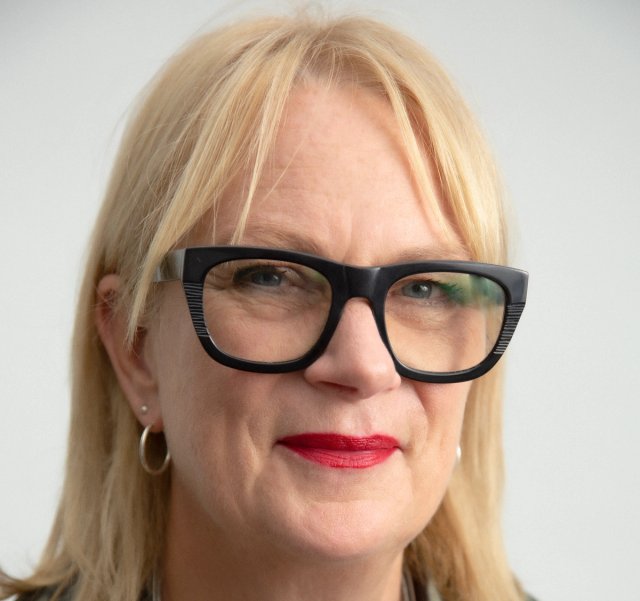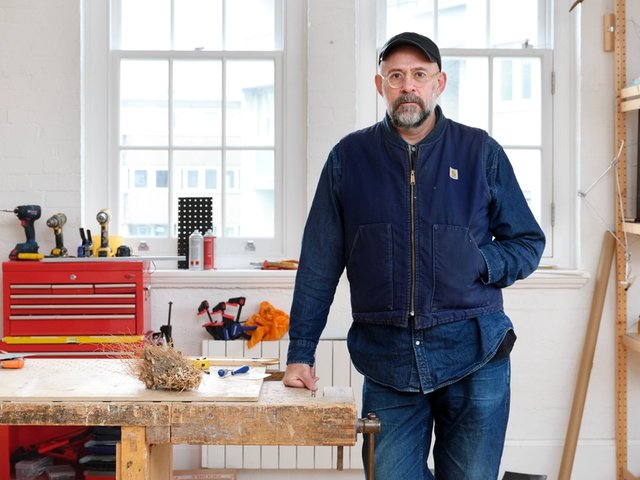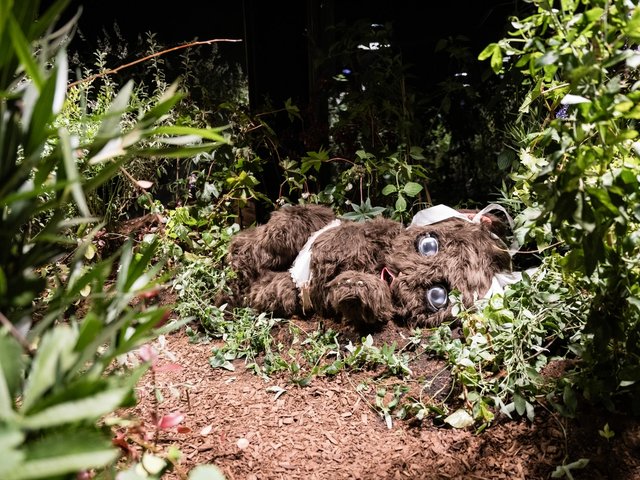Birds are doing it, bees are doing it, even butterflies and trees are doing it… The current show at Castello di Rivoli in Turin Mutual Aid: Art in Collaboration with Nature marks a new departure for exhibition-making by being entirely devoted to work created using the myriad forces of nature. Human artists may be the initiators but here all exhibits are shaped and often completed by the non-human world.
There are Michel Blazy’s snail trail action paintings, Tomas Saraceno’s spiderweb sculptures, Aki Inomata’s beaver-chewed trees, Tamara Henderson’s ongoing soil-generated sound pieces and Caretto/Spagna’s arrangements of synthetic plastic and polystyrene pebbles carved by the Rhône river. Vivien Suter hangs her paintings out in the Guatemalan rainforest to be completed by whatever weather systems or critters they might encounter, while Precious Okoyomon creates a sweltering toxic paradise of poisonous plants, flapping exotic butterflies and an intermittently screaming animatronic bear. A series of mycelium sculptures by Nour Mobarek demonstrates the miraculous, metamorphic potential of rhizomatic fungus and Renato Leotta captures underwater plankton self-portraits by the light these microscopic organisms cast on photosensitive paper.

Aki Inomata, How to Carve a Sculpture (2018-ongoing)
Photo: Eisuke Asaoka
Presiding over these interspecies mash-ups is the venerable, Turin-based Arte Povera hero Giuseppe Penone, whose various interactions with an ash tree in the 1960s—most notably inserting a bronze cast of his hand for its tree trunk to grow around—form a powerful if rather more coercive symbol of humankind’s entanglement with nature. Historical context is also offered by the inclusion of Agnes Denes, another environmental and conceptual pioneer. The American artist’s 1970s photographs of chained trees carry a similar message to Penone’s intrusive bronze hand, but her land art classic Tree Mountain: A Living Capsule, started in 1992 and involving the planting of 11,000 trees by 11,000 individuals, demonstrates a more reciprocally beneficial relationship with nature.
Mutual Aid was conceived by Castello di Rivoli’s new director Francesco Manacorda and the curator Marianna Vecellio with the intention of using these collaborative artworks to illustrate the need to reformulate our relationship with the natural world and, as they put it, “foster care for the fragile interdependence that binds us as co-agents within the ecosystem of which we are part.” A key influence on their thinking was the Russian naturalist and anarchist philosopher Piotr Kropotkin. In his early 20th century writings, Kropotkin argued that the survival and development of many different species, including humankind, is benefited and made possible by mutual aid and shared interactions rather than competition, especially the case in times of crisis and limited recourses—ie, now.
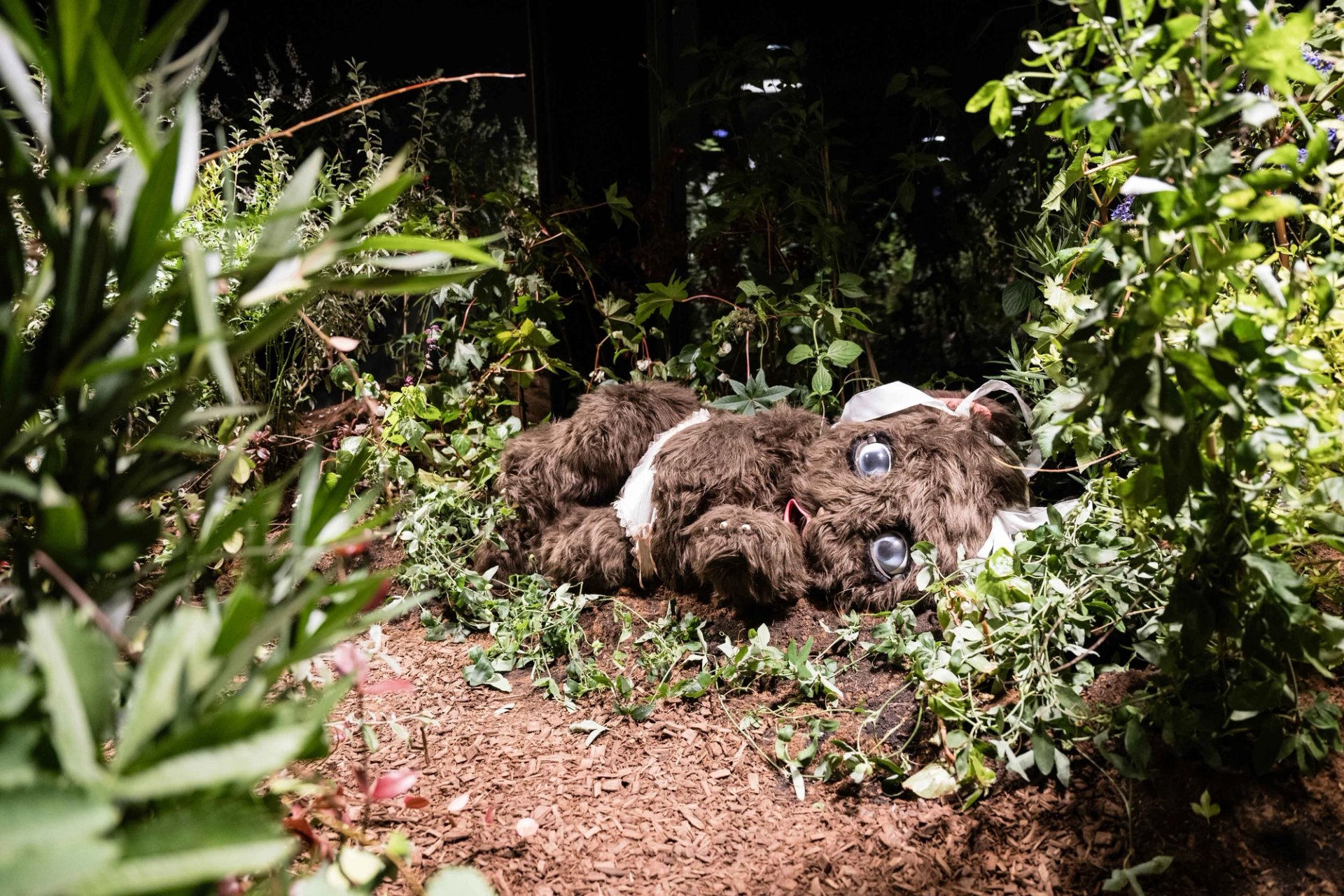
Installation view of Precious Okoyomon’s the sun eats her children (2023) at Castello di Rivoli, 2024
Photo: Andrea Guermani. Courtesy Castello di Rivoli Museo d’Arte Contemporanea , Rivoli Torino
In a radical shakeup of the usual role of the museum to contain and preserve, Mutual Aid’s curators view it less as an exhibition and more as a “living organism,” subject to unpredictability, evolution and change. Over time many of its exhibits will alter, evolve and even decay with this state of transience regarded an intrinsic and positive element of the show. In this context it is therefore is significant that the origin of the word mutual comes from the Latin word “mutare”, meaning “to change”, thus underlining the fact that reciprocity also offers opportunities for transformation.
Laying down a mantle
Over the past few years there have been a number of green-themed shows underlining humankind’s interconnectedness with the natural world. Some have also incorporated living elements. But this exhibition is the first to foreground the importance of co-operation, respect and collaboration with the natural world so forcefully and to put these principles and a genuine engagement with nature at its core. The emphasis on the role of various life forms in this creative endeavour even extends to the wall panel, which makes the point of alphabetically listing human artists’ names alongside the names of the species of their non-human co-creators.
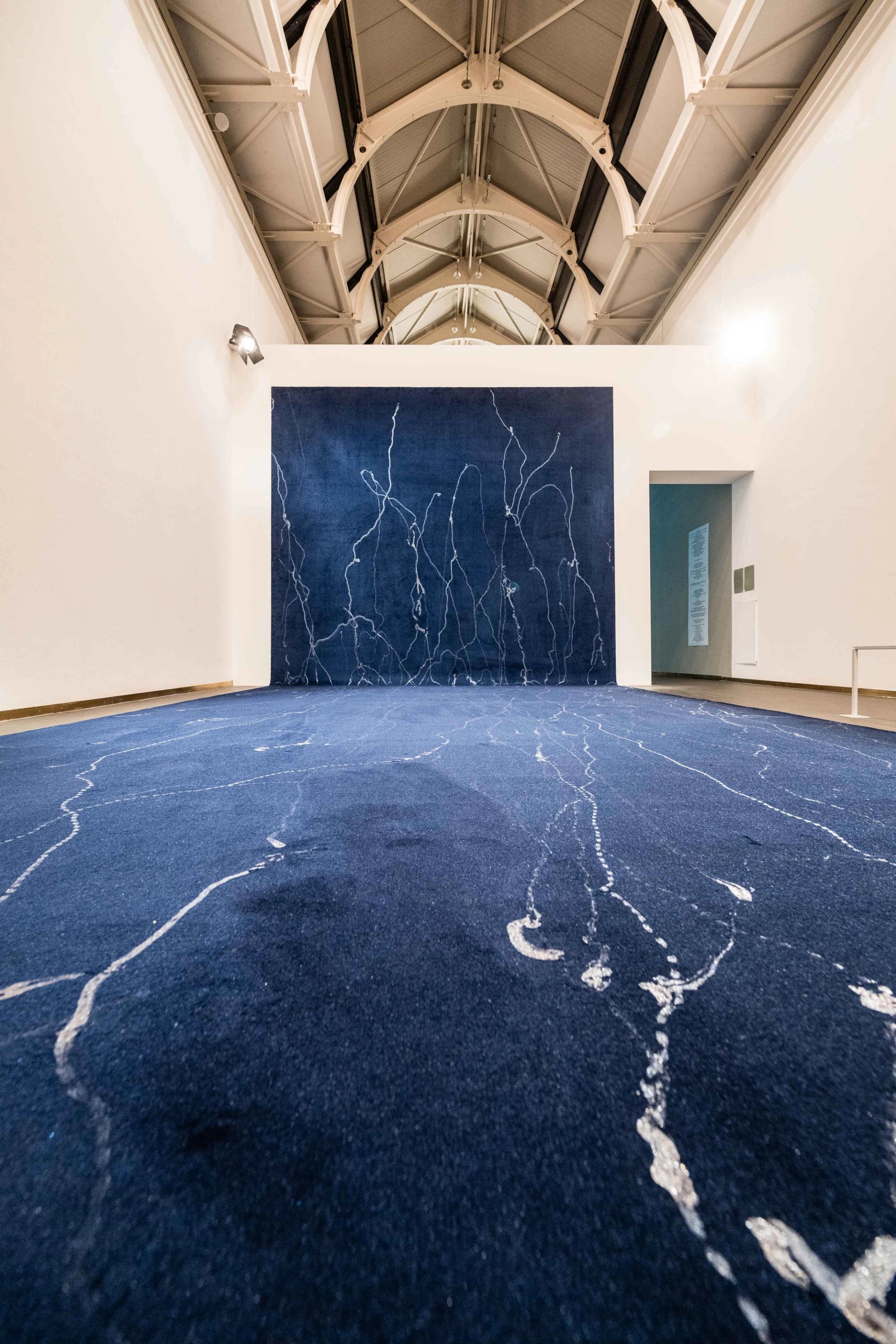
Installation view of Michel Blazy, Le lâcher d'escargots (The snail release, 2009) at Castello di Rivoli, 2024
Photo: Andrea Guermani. Courtesy Castello di Rivoli –Museo d’Arte Contemporanea, Rivoli-Torino
One exhibition is not going to change the world but Mutual Aid offers a valuable chance to reflect on an alternative way of doing things.Of course with many of the artworks on show it is still the humans framing, gathering and in some cases manipulating nature; and of course there is still much work to be done to make this and every exhibition more sustainable, whether at Castello di Rivoli or beyond. However in every aspect of both its creation and conception every effort has been made to play down human superiority and minimise environmental impact. As much as possible all materials were locally sourced and sustainably shipped, even if this carried some risk.
Arguably more powerful by its absence on opening day was Australian artist Nicolas Mangan’s Sarcophagi (2023), made from the salvaged dead coral of the Great Barrier Reef. This symbol of the world’s largest living organism—now perishing because of climate change—was held up in transit due to the artist and curator’s decision to transport it by boat rather than air. This may be seen as a bold call for one of the show’s bulkiest and most far-flung works—but it is one that will mean the carbon footprint of its journey is reduced by around 90%. Such compromises are of benefit to human and non-human communities alike.


